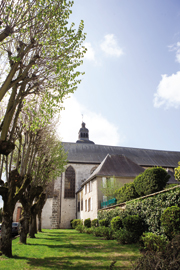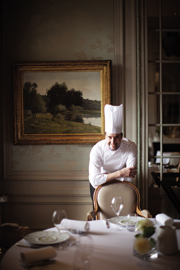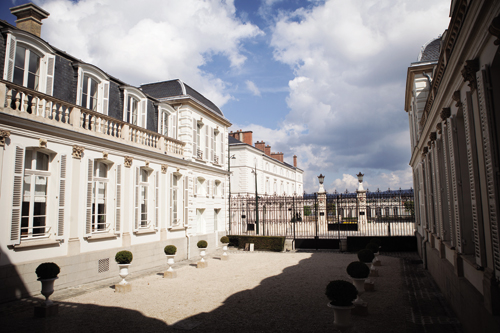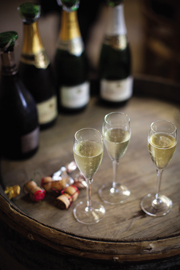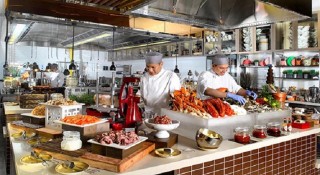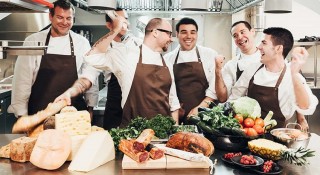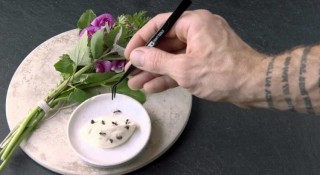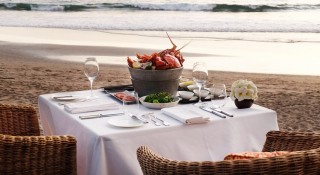A few minutes down the road, on the edge of town, we check in to Les Crayères, a Belle Époque château turned 20-room inn. Overlooking a wedge of parkland, it takes its name from the region’s 30-meter-deep chalk pits, or Crayères, which were excavated in Gallo-Roman times and that now serve as cellar complexes for Champagne houses like G.H. Mumm. The hotel’s guest suites, crafted with panache by Parisian designer Pierre-Yves Rochon, are gorgeous, decked out in couture fabrics and wood paneling; Les Crayères’ formal gardens beckon through my window.
The food proves another highlight; indeed, Le Parc, an extravagant, Michelin-starred dining room overseen by chef Philipe Mille—a protégé of Yannick Alleno—draws a regular stream of day-trippers from Paris for its delicate, ingredients-driven French fare. It’s also, to judge by the canoodling couple at the window table, a fabulously romantic setting, with discreet service to match. Each course of the meal—sweet, buttery langoustines with artichokes; sea bass with creamy shellfish sauce; chicken with truffles—is matched with champagne, and, in the case of the dessert, with a glass of Marc de Champagne, a digestif made from the pomace (discarded seeds, skin, and stems) of grapes. By the time I’m finished, I’m wondering how I’ll manage to climb the château’s grand staircase to bed.
JUST AS FRIDAY evening ended with Champagne, so begins Saturday morning. Across the street at Maison Veuve Clicquot Ponsardin, we join a tour conducted by Amandine Navarro, the house’s resident historian. She leads us underground into the rough-walled chalk cellars, all 25 kilometers of them, some as vast as a cathedral and spotlighted in a pale version of Veuve Clicquot’s trademark orange. I ask Navarro about the names posted above the arches we pass. She explains that when an employee has served the house for 50 years, a cellar is named in their honor.


